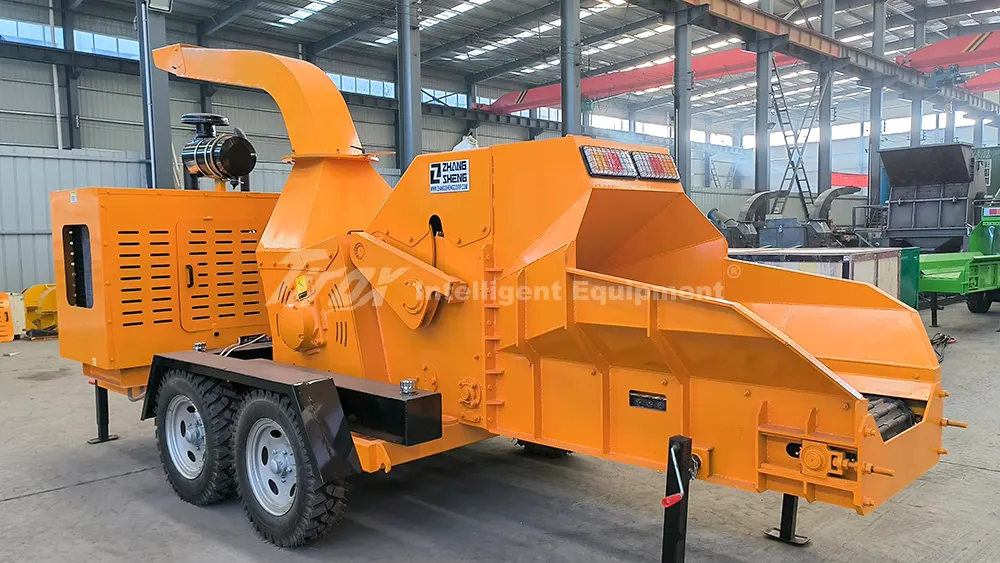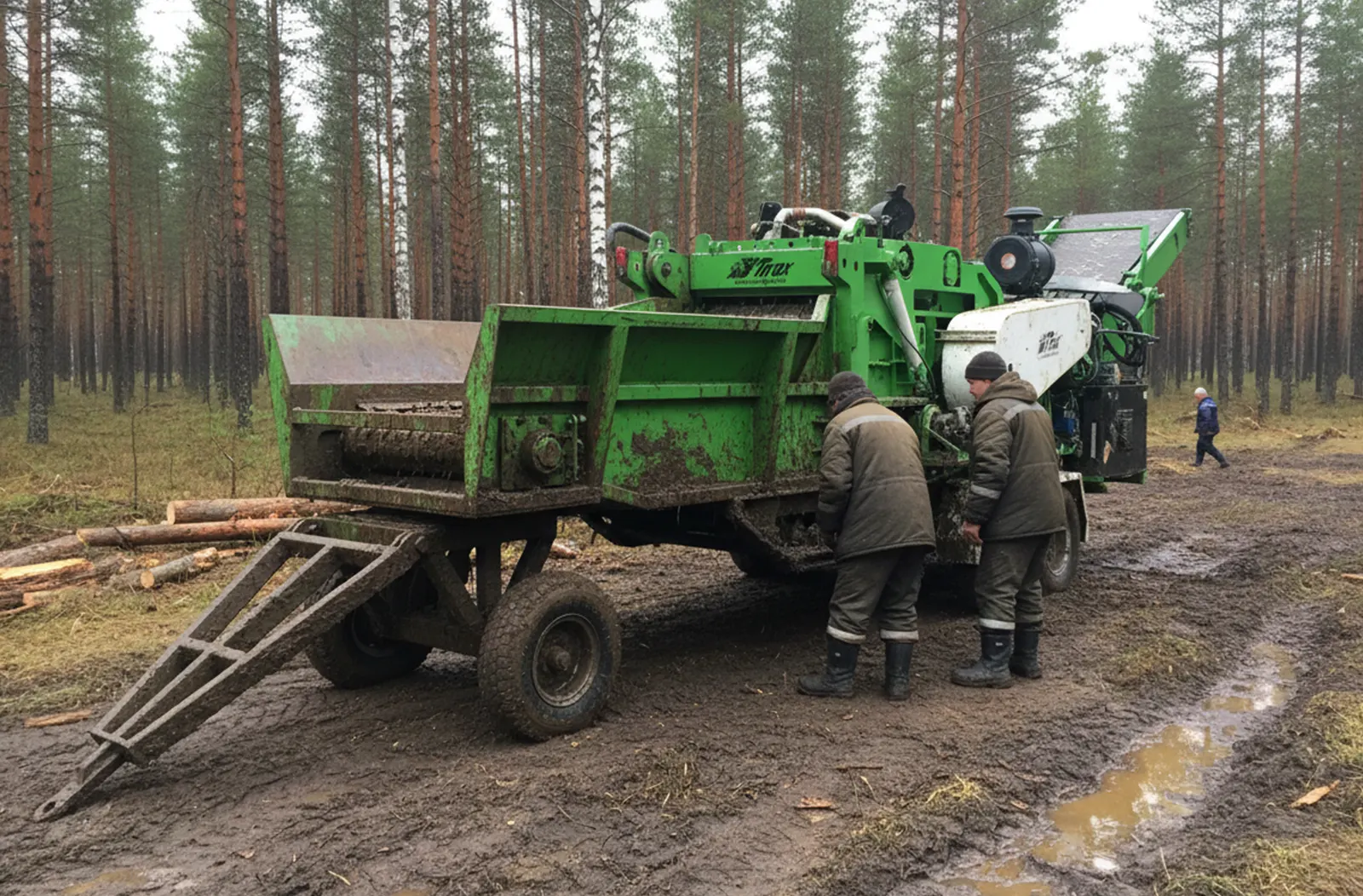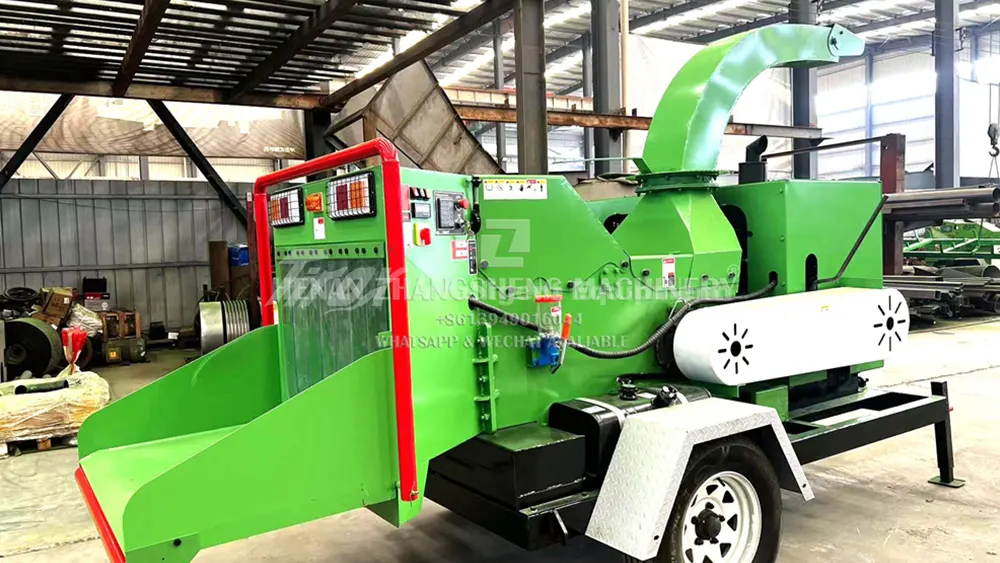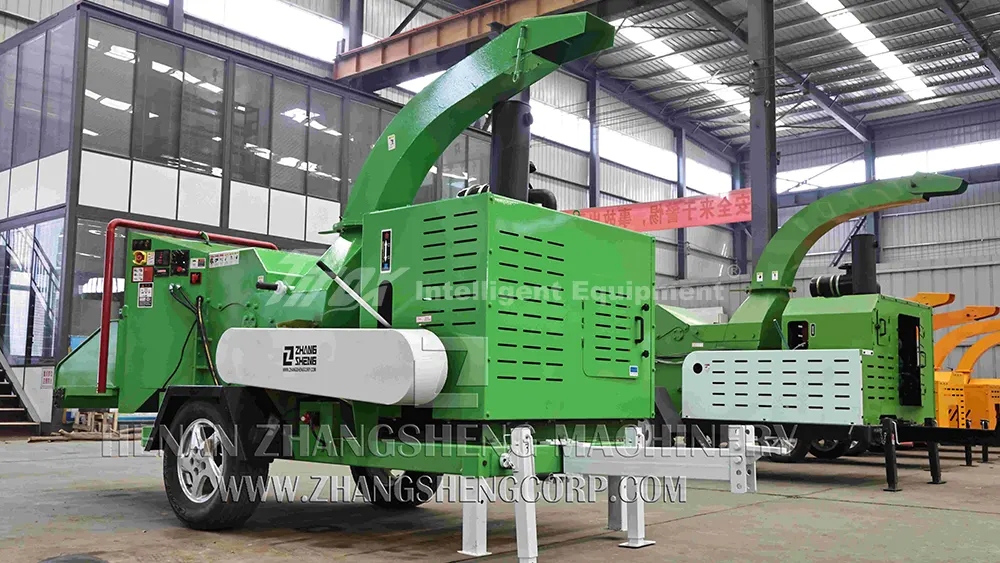You’ve just finished pruning your pine trees, and now you’re faced with a mountain of fresh, fragrant limbs. The idea of reducing them to manageable chips with your wood chipper is appealing, but you might wonder if their sticky sap or soft nature will cause problems.
Yes, you can absolutely put fresh pine limbs in a wood chipper; they are a type of softwood that wood chippers are specifically designed to effectively process, often chipping more easily than dry wood due to their moisture content.
In my 22 years of manufacturing wood processing equipment at TIROX, I have seen countless tons of fresh pine limbs go through our chippers, turning what once was bulky waste into valuable chips. It is a common material our machines are made to handle efficiently. Our hydraulic forced feeding systems precisely manage various material diameters, ensuring optimal performance even with fresh, flexible pine.
Can you put pine cones in a wood chipper?
You’re cleaning up after a storm, and among the fallen branches are countless pine cones, ranging from small and soft to large and hardened. It’s tempting to throw them into the chipper along with the limbs. But will they chip cleanly, or could they cause issues?
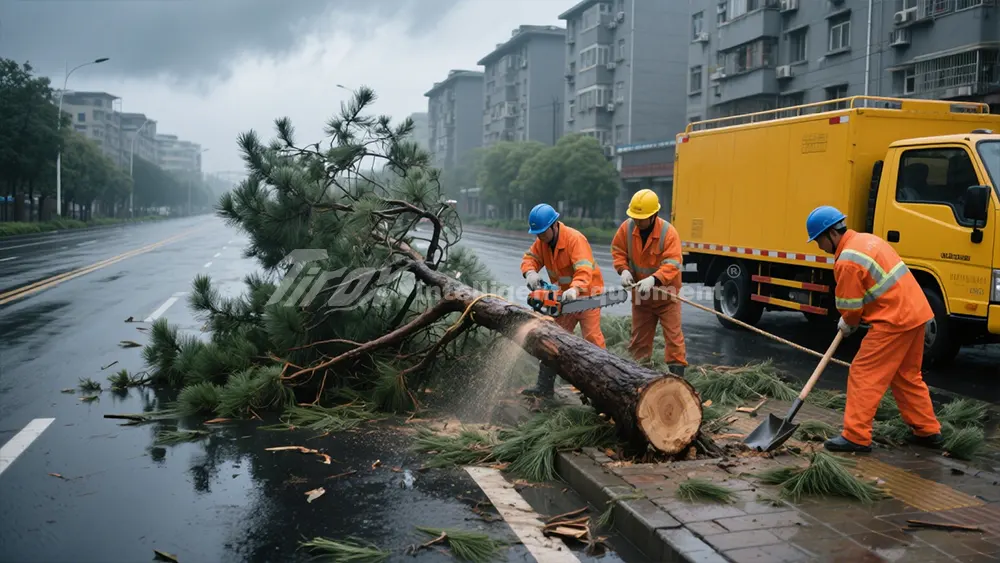
While wood chippers can generally handle a small number of clean pine cones, putting large quantities through is not ideal, as their dense, irregular shape and potential for embedded debris can dull blades faster or cause minor clogging.
Based on my experience, especially when dealing with such diverse materials as pine cones, it is important to remember what our machines are primarily designed to do. Wood chippers are built to cut and crush big pieces of wood. Pine cones are woody, but they are not like solid branches. They are often tougher and more fibrous than they appear, and their irregular shape can sometimes cause them to bounce around or get caught in ways a straight branch would not. It is also common for pine cones, especially those collected from the ground, to have embedded dirt, small stones, or even metal fragments, which are a major hazard for chipper blades. Our blades are sharp and strong, made from materials like H12 or optional A8B forged steel for hard impacts. But foreign objects can severely damage them.
The Nature of Pine Cones
Pine cones are a type of woody material, but they differ significantly from uniform branches. Their structure is often compact and dense when dry, which can create more impact on the chipper blades than a branch of comparable size. When green, they can be pliable, but their scales still present an irregular surface. The core design of a wood chipper relies on sharp blades slicing through fibrous material. While it can shred pine cones, the output might not be as uniform as wood chips. The main risk, as mentioned, comes from external debris. Always try to ensure pine cones are as clean as possible before feeding them into the chipper. For more information on what to avoid, read our blog on what not to put in a wood chipper.
Impact on Chipper Blades
The irregular shape and hardness of pine cones can increase wear and tear on chipper blades compared to clean, straight branches. Our blades are designed to be durable, often double-edged so that when one side wears, you can switch to the other, reducing sharpening frequency. However, anything that causes excessive impact or abrasion will shorten their lifespan. Continuous processing of large volumes of pine cones might lead to quicker blade dulling, requiring more frequent sharpening or replacement. If you plan to chip a significant amount of pine cones, it is good practice to mix them with regular branches to help them feed through more smoothly and distribute the wear on the blades.
Can you put pine needles in a wood chipper?
You’ve got a pile of pine needles, perhaps from clearing under your trees or after chipping the limbs. You might think, “They’re organic, can they go into the chipper too?” You want to reduce their volume, but you’re unsure if fine, fibrous needles are suitable for a machine designed for wood.
No, putting large quantities of loose pine needles into a standard wood chipper is not recommended, as their fine, fibrous nature tends to cause tangles and clogs in the cutting mechanism rather than being efficiently chipped.
As someone who oversees the production of these very machines, I can tell you that pine needles, much like leaves or grass, behave differently than solid wood. Our wood chippers use sharp blades mounted on a drum or disc to slice through wood fibers. Pine needles are soft and stringy; they do not offer the resistance needed for a clean cut by a typical chipper blade. Instead of being chopped, they tend to wrap around the drum or gum up the discharge chute, leading to frustrating and time-consuming clogs. This is a common issue we hear about, as people often assume all organic yard waste can go into the chipper. For processing such materials, a machine specifically designed as a shredder, which uses flails or hammers, is more effective.
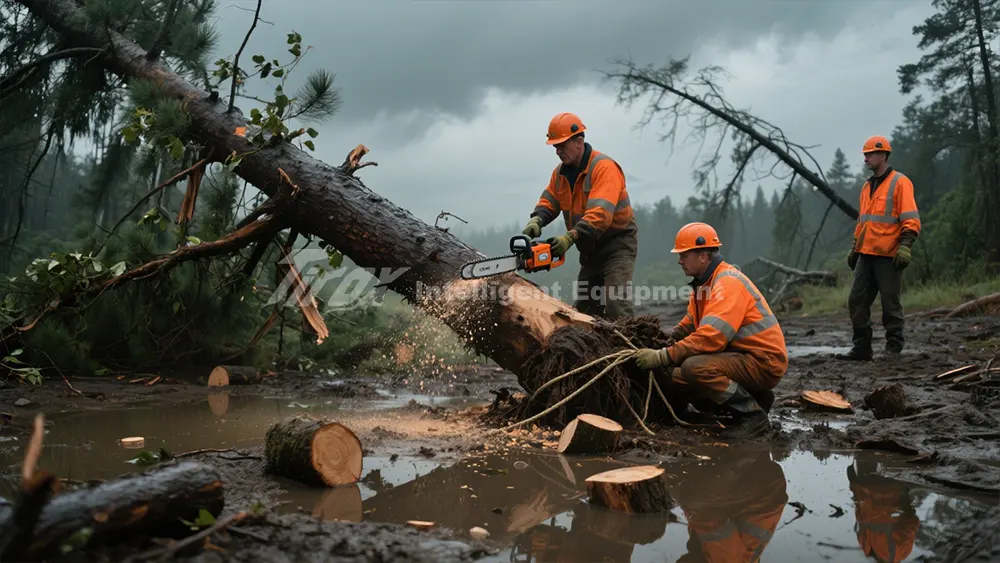
Chipper vs. Shredder for Fine Materials
It is crucial to understand the distinction between a wood chipper and a wood shredder. A wood chipper primarily employs a cutting mechanism with sharp blades to process hard wood, branches, and logs. Its feed opening is typically larger to accommodate thicker pieces. The output is usually coarser, more uniform wood chips. In contrast, a shredder employs hammer flails, cutting lines, or small tearing blades designed to break down soft green waste, leaves, and thin twigs into finer mulch or shredded material. If you are dealing mainly with pine needles or other soft, fibrous materials, a shredder will be far more efficient and less prone to clogging. While some machines are combo “shredder-chippers,” a standard wood chipper is optimized for woody material.
Preventing Clogs and Ensuring Safety
Attempting to force large amounts of pine needles into a wood chipper will likely result in frequent clogs. When a chipper clogs, it stops feeding, and you have to manually clear the jam, which can be dangerous if not done correctly with the machine completely shut off. While our machines have user-friendly controls that allow you to stop or reverse the feed to protect blades and the diesel engine if a clog occurs, prevention is always better. To avoid these issues, rake pine needles into a separate pile for composting, or use a leaf vacuum/shredder specifically designed for such materials. A small amount of needles attached to branches is usually fine, as the wood helps pull them through, but standalone piles should be avoided. Learn more about the general operation of wood chippers on Wikipedia for Wood Chipper.
Can you put leaves in a wood chipper?
You might have an abundance of autumn leaves that need to be cleared, or perhaps leafy branches from pruning operations. You’re wondering if your wood chipper, a machine designed to make quick work of branches, can also handle these leafy materials effectively.
No, putting large quantities of loose leaves, especially when wet, into a wood chipper is generally not advisable, as their soft, often moist texture is prone to gumming up the machine and causing clogs rather than producing clean chips.
My customers often ask about processing soft, green materials. It is a common question. My observation has been that leaves and very green, wet material behave differently than dry, woody branches. Wood chippers that use a drum or disc with knives are best at cutting solid wood. When you feed a lot of leaves or wet green waste, it tends to compact or wrap around the cutting drum or blades instead of being cleanly cut and discharged. This leads to clogs very quickly. A clogged chipper is not just frustrating; it also stops your work. You have to turn off the machine, wait for everything to stop, and then manually clear the jam. This is when accidents can happen if you are not careful or if the machine starts unexpectedly.
Why Leaves Cause Problems for Chippers
Leaves, much like grass and fine pine needles, are high in moisture and have a flexible, sometimes stringy texture. This combination makes them problematic for the sharp, impact-based cutting mechanism of a wood chipper. Instead of being cleanly chopped, they tend to get pulverized into a pulpy mass that can stick to the internal components and clog the discharge chute. Wet leaves are particularly notorious for causing severe blockages, halting operations and requiring manual clearing. While our chippers have intelligent feed systems that can automatically adjust feed speed or stop feeding to prevent blockages, an overwhelming amount of unsuitable material will still cause issues. For optimal use, wood chippers should process wood and woody biomass. You can explore our robust chipper models, which are ideal for woody materials, on our product page: https://tiroxcorp.com/wood-chipper/.
Alternative Uses for Leaves
Instead of trying to chip leaves in a machine not designed for them, consider more effective alternatives. Leaves make excellent compost material, enriching your soil and providing valuable nutrients for your garden. You can also use them as a natural mulch to suppress weeds and retain soil moisture. For large volumes, a dedicated leaf shredder or a leaf vacuum with a shredding function can significantly reduce their volume, making them easier to handle for composting or mulching. Some combo chipper-shredders can handle both, but it is important to check the machine’s specifications for its shredding capabilities for soft materials. The University of California’s Master Gardeners program offers good advice on composting leaves.
Conclusion
Fresh pine limbs are ideal for wood chippers, while pine cones should be chipped cautiously due to potential debris and density. Loose pine needles and leaves are generally unsuitable for wood chippers as they cause clogs and are better processed by shredders or used for composting.


